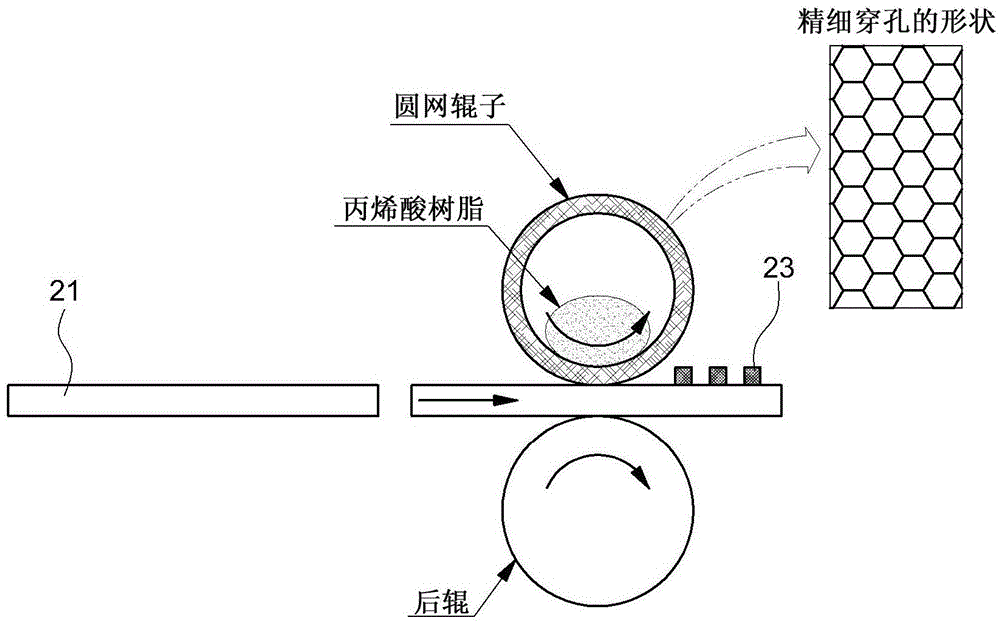Hood insulator including non-woven fabric and fine resonance layer and method of manufacturing same
A technology of resonance layer and non-woven fabric, applied in the field of hood sound insulation, can solve the problems of increased weight, increased time and cost, etc., and achieve the effects of saving manufacturing time and cost, improving noise reduction performance, and maximizing space application
- Summary
- Abstract
- Description
- Claims
- Application Information
AI Technical Summary
Problems solved by technology
Method used
Image
Examples
Embodiment
[0071] (1) A fine resonance layer including precise and regular perforations is formed on the surface of a non-woven fabric by rotary screen printing technology. The non-woven fabric has a thickness of 0.32 mm and a basis weight of 100 g / m 2 . Acrylic resin having heat resistance even at 180°C can be used as a material for forming the fine resonance layer. As in Figure 4 As shown in, the diameter of the perforations is 1.5mm, and the interval of the perforations is 2.8mm. Acrylic resin has a pattern in which the center of the perforation is repeatedly formed as an equilateral triangle. The thickness of the fine resonance layer is 0.28 mm, and the total thickness of the surface layer material is 0.6 mm.
[0072] (2) Bond the surface material to a thickness of 35mm and a basis weight of 700g / m by applying heat 2 The surface of glass wool, and will have a thickness of 0.32mm and a basis weight of 100g / m 2 After bonding the non-woven fabric to the opposite surface of the glass wool...
PUM
 Login to View More
Login to View More Abstract
Description
Claims
Application Information
 Login to View More
Login to View More - R&D Engineer
- R&D Manager
- IP Professional
- Industry Leading Data Capabilities
- Powerful AI technology
- Patent DNA Extraction
Browse by: Latest US Patents, China's latest patents, Technical Efficacy Thesaurus, Application Domain, Technology Topic, Popular Technical Reports.
© 2024 PatSnap. All rights reserved.Legal|Privacy policy|Modern Slavery Act Transparency Statement|Sitemap|About US| Contact US: help@patsnap.com










